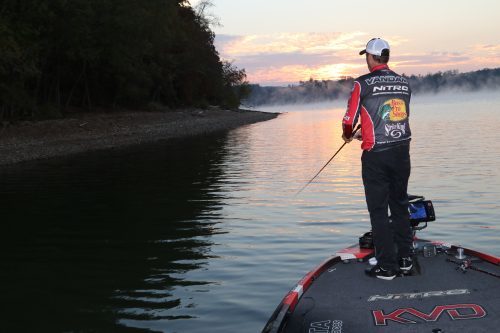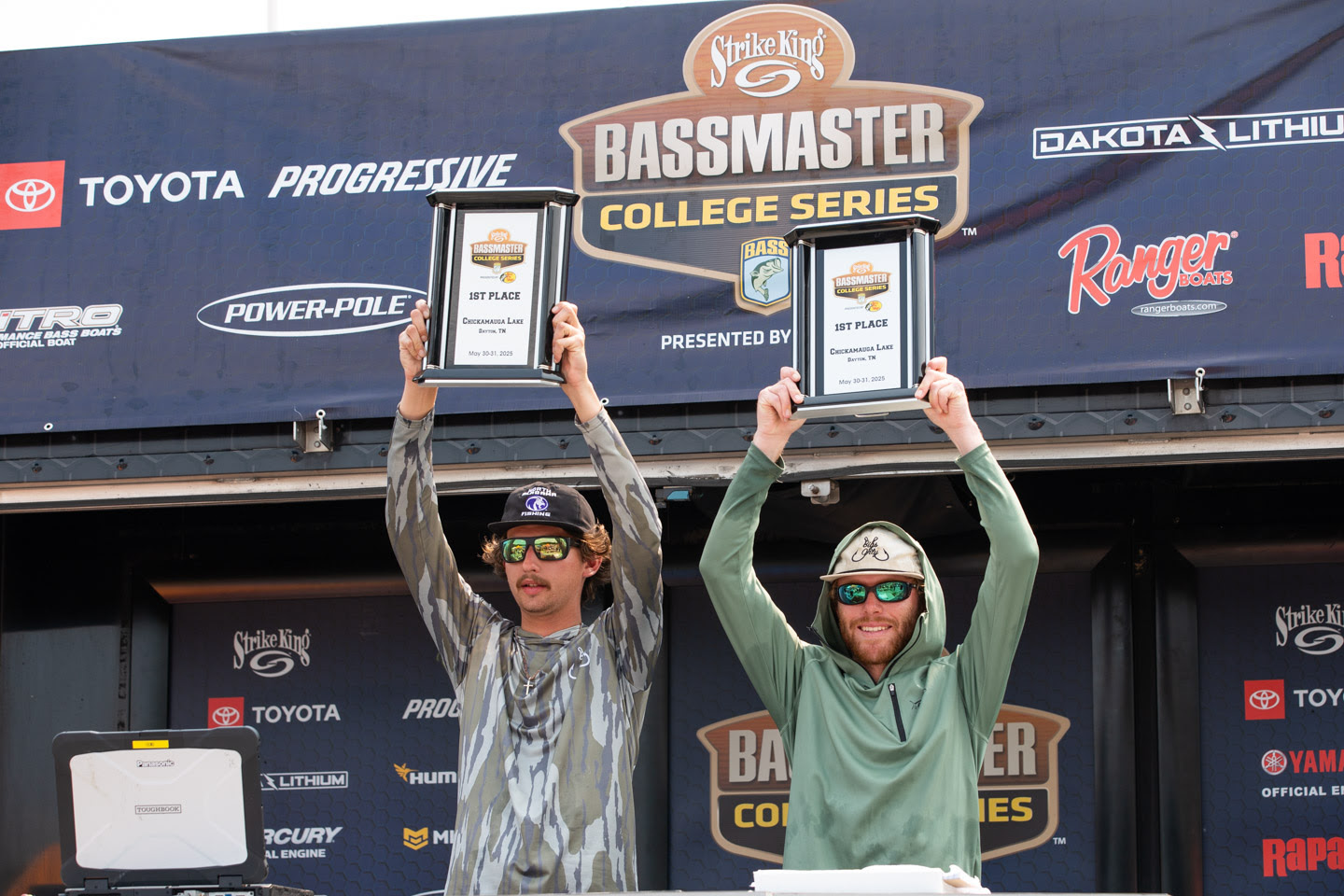INDIAN SUMMER EXTENDS OPPORTUNITIES
By David A. Brown
Calendars and thermometers aren’t always on the same page and when fall seems reluctant to relinquish summer’s residuals, the ensuing weather patterns bring a bounty of opportunity balanced by strategic considerations. It’s called an Indian Summer, a weather phenomenon technically described as a late-season warmup with mostly sunny, clear conditions and above average temperatures, an Indian Summer can arrive as early as late September, but October-November is more the norm.
Technically, these conditions occur after the first frost in northern latitudes, but regardless of timing, Bassmaster Elite pro Kevin VanDam knows the Indian Summer phenomenon proves profound because it overlaps a seasonal constant — shortening daylight periods. Notwithstanding the impacts we’ll look at next, the fish will always defer to their instinctual course.
“Their movement as they transition into their fall pattern and then into their winter pattern is not based on water temperature, it’s more based on the time of the year,” he said of typical bass behavior. “Instead of going all the way to the backs of the creeks, you have to think about where that next seasonal pattern is going to be, so they’re going to be closer to their wintering areas.
“They may be shallow, but they’re going to be closer to deep water, closer to a channel swing, or the mouth of a creek.”
DIFFERENT OPPORTUNITIES
As VanDam points out, Indian Summers extend seasonal patterns that leave fish vulnerable to observant anglers.
“Later in the year, when you have above normal water temperatures and weather conditions and you have things warming in the afternoon; you’ll see spikes in activity levels,” VanDam said. “Late in the fall, you’ll see a lot of shad activity and bass in the shallow — things you normally shouldn’t see this time of year.
 “You’ll really see that in the afternoon when the sun gets up. So you have windows of high activity by both the bait and the bass.”
“You’ll really see that in the afternoon when the sun gets up. So you have windows of high activity by both the bait and the bass.”
And don’t miss the “after party.” VanDam notes that a true Indian Summer is a relatively brief period that eventually gives way to late Autumn’s inevitable cold fronts. However, pockets of similar opportunity often arise between the frosty stuff.
“If you get a warming trend once the weather has gotten cold, the same thing can happen again,” VanDam said. “It’s really about watching the weather patterns and seeing those abnormal spikes in temperature.
“When you get a mild system that hangs around for a week, in the afternoons, you can get some high activity level. The reason the bass are active is their forage is active.”
Conversely, sudden temperature declines impart a gathering effect. As VanDam explains, a cold front that concludes Indian Summer conditions will pull all the bass off a shallow feeding flat and park them them on the closest channel swing stretch where they’ll hold on the steeper contour until the weather warms up, or conditions signal winter’s official onset.
BEST BAITS
 Acknowledging the overall benefits of an Indian Summer, Elite pro Greg Hackney notes a balancing point: “With these warmer-than-normal temperatures we’re having, it cuts back on my opportunities to power fish and go back to big lures like you’d use in the summer. It’s still a great time to fish and you can get a lot of bites, but I feel like I need to downsize.
Acknowledging the overall benefits of an Indian Summer, Elite pro Greg Hackney notes a balancing point: “With these warmer-than-normal temperatures we’re having, it cuts back on my opportunities to power fish and go back to big lures like you’d use in the summer. It’s still a great time to fish and you can get a lot of bites, but I feel like I need to downsize.
“What happens with these warmer temperatures is this year’s baitfish hatch still seems to be moving, but the bigger baitfish haven’t moved yet. So, by downsizing a little bit, you’re basically using the same presentations, just smaller. You’re still going to have good results during a weird seasonal (occurrence).”
Hackney summarized his downsized selections: “Rather than flipping a big Strike King Rodent or a jig, I’ll downsize to a Strike King Tube. I’ll also downsize my (flipping) weight. Rather than using a 3/8- or a 1/2-ounce, I’m using a 3/16- or a 1/4-ounce. For my reaction baits, I’ll throw a 1/8-ounce buzzbait, a 1/4- to 3/8-ounce spinnerbait, or a Strike King 1/0 squarebill rather than a 1.5.”
VanDam’s a big fan of topwaters like a Strike King Sexy Dog walking bait, a Strike King Redeye Shad and a buzzbait for flat terrain, or a jerkbait for deeper highland reservoirs — all good choices for covering water to find fish that often continue the shallow roaming of earlier weeks.
“Indian Summer conditions can scatter the fish,” VanDam said. “Instead of being on one steep, rocky bank, they can be down a big flat or a grass line. So baits that allow you to be more efficient and cover the top end of the water column can be really good.”
BEAR IN MIND
While an Indian Summers can stimulate bass beyond normal fall behavior, Hackney said the daytime weather can be kinda bland. Not the worst thing in the world, but certainly something to consider.
“It’s still pretty warm, we don’t get a lot of wind and there’s a lot of dead conditions — slick, no leaf movement; it’s a funky period,” he said. “Because of this, I try to stay off of the areas I’m fishing. This is a time of year when those fish get extremely shallow.
“When you don’t have bad weather, you have to be easy on your boat presentation. You don’t want to leave much ‘footprint’; you don’t want to disturb everything around you.”
That’s an important point, Hackney said, because of inherent fall positioning. By drought or drawdown, a lot of the nation’s lakes have been lowered, so fish pushing back into creeks and pockets end up feeding super shallow.
“This time of year, those fish are in flat water,” Hackney said. “It’s not like those fish are sitting off a drop and you’re casting up shallow. The bait is transitioning and the fish are going wherever the bait is.”


















